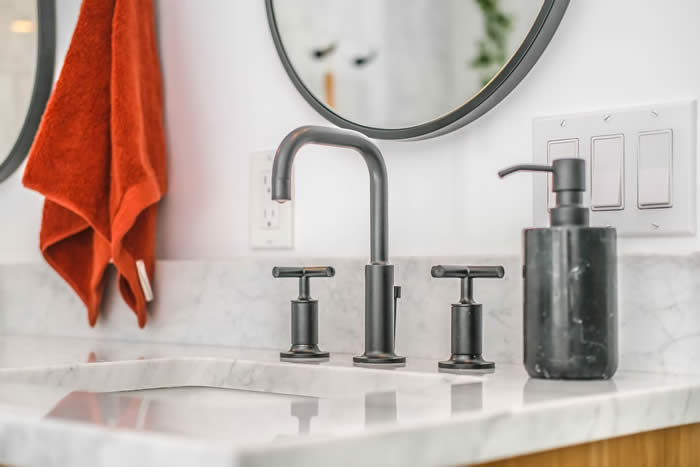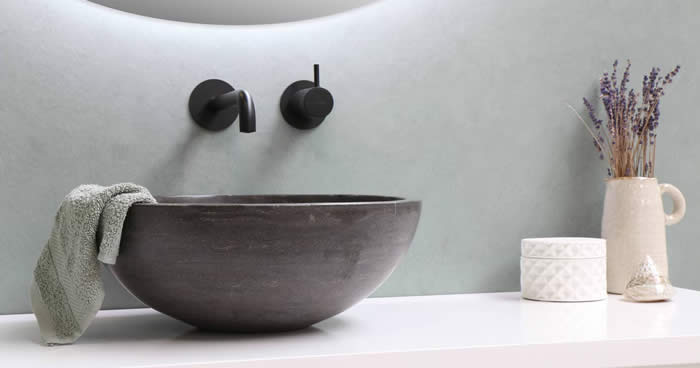However, using professional services for this purpose would be a costly affair and unnecessary at most times. It is because you can clean it yourself with DIY methods that are as effective as the ones used by professionals.
In this article, we look at some of the key tips to consider or use when it comes to cleaning your faucets and sink.
4 Useful Tips To Remove Grime And Gunk
Although there are many methods accessible to remove grime and gunk from sinks and faucets, we will look at the most useful ones. These are the tips that can help your
TCK faucets look clean, tidy, shining, and hygienic at all times.
Testing Your Cleaning Materials
Different materials can be used to
remove grime and gunk. While some people use dish soap, others prefer to use materials like vinegar. However, you would not know for sure how your faucet or sink would react to the materials.
Therefore, it is a good idea to test them in a place that is not exposed. With testing and leaving it to sit for a few minutes, you can conclude if it is safe to use it on all parts of the faucets or sink. You would eliminate the chances of damage by testing it before using it.
You can also test the liquid dish wash, clothes, brushes, and other items as it will also give you a fair idea of how good the process can get before you take the full plunge. In short, testing would always help you avoid any undue risks you might take with cleaning.
Start Gently
It is a decent idea to start the cleaning process after testing your cleaning components. It is also better if you could use a mild dishwasher combined with warm water. If these do not work, you can move towards the more aggressive methods available.
If you are starting gently, you are giving the cleaning materials all the time necessary to do their job. If they do not work, you can choose other options that are available to you. It can apply to any regular bathroom or kitchen sink, or even faucets.
Using natural and day-to-day items for cleaning is also a relatively good option. If you use these, you are eliminating the chances of causing damage to the sinks or faucets. Items like white vinegar, baking soda, boiling water, and a wipe cloth are good options.
If they are unable to remove the grime and gunk, you can switch to white
vinegar and baking soda. Invariably, these are capable of removing them from your faucets and sink totally. However, extra physical pressure and time may be essential for this process.
Use a Used Toothbrush
You will be amazed at the results after you learn
how to clean a bathroom sink with a toothbrush. A used toothbrush that you are likely to discard can be used for this purpose. It can help you reach hard-to-reach areas like the sides and the region behind the tap.
You can utilize a dishwashing liquid or baking soda and vinegar combination when using a toothbrush. It can work wonders and make your sink or faucet look clean and as new as possible. Even nasty stains can be removed by applying a little bit of pressure to them.
Maintaining the Sink or Faucet
The best way to avoid grime and gunk accumulation is to maintain your sink appropriately. Regular washing and occasional deep cleaning would get the job done in most cases. You can also use baking soda and vinegar to remove harmful bacteria.
The bacteria that accumulate in the drain pipes can be the cause of the nasty smell emerging from the drain. Using these to clean the drain can help remove even a minor accumulation of harmful bacteria. It would also remove the potential clog-causing elements from the drain.
Few Other Tips
Use a Stopper: Using a stopper in your bathroom sink or faucet is a great idea to avoid clogging due to hair particles getting accumulated. The stopper would collect most of the small parts that slip into the drain. You can remove it by hand, wash it, and replace it.
Deep Cleaning: If deep cleaning is not your type or when you do not have the time, hire a professional. Employing professional plumbing companies once every few months can help you keep your sink and faucets clean. Regular cleaning can ensure no clogging is possible.
Factors To Consider
If you are removing grime and gunk from the sink and faucets with DIY methods, you should consider these factors before you begin. These factors can influence how good the cleaning can be and what to do and not to do when trying DIY methods.
The Material of the Sink
You have to consider the materials that the sink, faucet, and other components are made of. Ceramic and metals are often the most common components used in sinks and faucets. Cleaning them using harsh or corrosive agents can spoil their looks and cause damage.
Warranty
Most modern sinks come with a warranty for a while. You should take into consideration the warranty terms and conditions before you begin cleaning. Always abide by the recommendations of the manufacturer to ensure that you do not void the warranty.
Materials Used for Cleaning
Always try to use non-corrosive, non-abrasive, and natural materials for cleaning purposes. Avoiding harmful chemicals like bleach and acid is important. These can damage the sink, drain, and other parts of the sink. The look of the sink or faucet may be damaged too.
Conclusion
Grime and gunk in the bathroom sink or faucet can cause many problems. Water clogging, accumulation of bacteria, and other issues are common with an unclean faucet or sink. Therefore, invest your time once every few weeks to ensure you can maintain a healthy and clean sink in your bathroom.
It would also ensure that you are helping your family be safe from potential health hazards. Apart from this, you would be happy to see your sinks and faucets looking as good as new when they are maintained and cleaned regularly. It can save you time, money, and other potential future complications.




